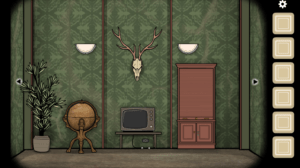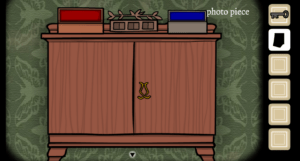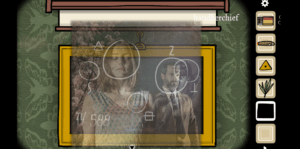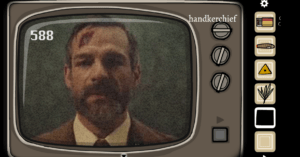For the puzzles critical play, I played Cube Escape: Paradox an escape room-style game surrounding a murder detective who is trapped in a room and is being “haunted” by a woman whose murder he remembers investigating. It is a digital game that I played on Steam, created for 12+ year-old players by Rusty Lake (an indie game studio). The puzzles in Club Escape: Paradox are the main driver of gameplay and serve the role of moving a storyline forward. As you solve puzzles you either collect tools that you will need to use to solve more puzzles or you get small tidbits of information about the storyline that the game is creating, slowly revealing information about the murder you were investigating before you woke up in the room without much memory. Therefore, puzzles influence the experience of the game in two main ways — by advancing a narration that draws in the user through intrigue to learn more about the murder and by creating a sense of challenge that the player wants to overcome by solving more and more puzzles.
The game starts off with a small animation of the main character (you) opening its eyes slowly and repeatedly as he regains consciousness, seeing the ghost of a woman that he says he recognizes. This is the only and first introduction to the storyline that you get at the beginning of the game. Immediately after the animation finishes playing, you are left to interact in the room yourself. The game is not in VR so you must click the right and left arrows to view one wall of the room you are in at a time and you click on items in the room to interact with them (they get zoomed into and you can then try to interact with drawers, doors, items on shelves, etc.). Some of the doors and drawers in the room are locked, some things are broken, and some things clearly require passwords to unlock clues. Immediately, the fact that some parts of the room you are in are restricted creates a desire in the player to investigate their surroundings to find the keys and passwords necessary to figure out what these restricted parts hold. This causes the user to click on as many parts of the environment as possible, something that actually helps them collect some freely available clues. For example, I was able to freely pick up fragments of a ripped picture, a jacket, and a cigar by just obsessively clicking on everything in the room and finding them hidden or on top of nightstands. There was an empty picture frame with a fragment of a picture on it, so it was implied that it was my goal to fill it in with additional fragments of the picture that I had to find. Once I did this, it revealed a new clue that I had to execute — typing something into a typewriter. Many puzzles were similar to this where I had to find something, place it physically in the right place, and it would reveal information while others were much trickier and involved placing certain shapes or numbers in the correct order and inputting them into the TV or clock in the room to reveal a clue (these were much harder and much more frustrating because they were sometimes very non-trivial to figure out). This clearly creates the aesthetic of discovery and challenge because players are motivated to constantly search around for new clues, to figure out how to put existing clues in the right context in order to get new information/tools, and to figure out how to actually solve the puzzles in order to reveal more of the story and reach the game’s goal which is to be able to escape the room you are locked in. Personally, I felt a desire to continue exploring the room and solving puzzles largely because I wanted to prove to myself that I could overcome the challenge that came with it and I felt very validated whenever I successfully solved a puzzle and gained a clue.

[example of the view you have when looking around the room]

[ example of the view when you click on an item in the room and collect a tool]

[example of a more complex puzzle that you had to put into context and use the TV to piece together]
Additionally, one of the very unique and attention-grabbing parts of the game was the actual narrative that the puzzles helped move forward. I would classify the game as both embedded and evocative as it was the traditional murder-solving, amnesia scenario that people are very used to seeing in films and because there is an already pre-constructed story created by the game designers that players cannot influence but rather must work to learn about gradually. One unique part of this game was the narrative was not only moved forward through aspects like pictures and letters. but also through audio recording and video (like actually taped videos of a man with blood on his face giving you clues or acting out a scene after you solved a puzzle). One thing that I really enjoyed about the narrative and that actually helped with some motivation to keep puzzle-solving was the fact that there were multiple story arcs present — there was trying to figure out what happened in the murder, who put us in the room, and figuring out who we even were. If the story was simply a murder mystery, I do not think that it would have kept my attention very well or been motivating/interesting enough to actually make me want to keep solving some of the more complex and frustrating puzzles.

[example of the unique, video feature in the game where an actual actor talked and created scenes]
Overall, I was not super satisfied with the game. I understood what it was trying to achieve with the puzzle mechanics, but I was a bit bored throughout the gameplay and not very motivated to keep solving puzzles besides the small gratification I felt when overcoming some of the challenging puzzles and when I got to see some of the fun, non-traditional aspects of the game like the actual video recordings. There was not much of an introduction to the mystery at hand when the game started which felt super abrupt and did not build rapport between myself and the character I was playing as. The introduction was so short that I really did not know what the goal of the game was until 20-30 minutes in once I had solved a couple of puzzles. Additionally, sometimes the puzzles felt very disconnected from the narration of the game which made them feel random and like they were only there to add a sense of difficulty to the game. Often this led to me being confused about how to move forward which ended up making me just click random places on the screen until I randomly picked up a clue or tempted me to look for spoilers online (not because I was excited to move forward but because I really had no idea what to do). If it were not for the critical play, I likely would have given up sooner on some of the more difficult, frustrating puzzles. A suggestion for the creators of the game would be to integrate the puzzles better into the intended storyline of the game, to have them always contribute something to the story, and to have their solution connect to the mystery of the storyline so that they feel like they always have a purpose and so they are more intuitive to solve for the players (e.g. maybe instead of having to put together random shapes in the correct order like the game currently makes you do, you have to decipher a message from the murderer).



